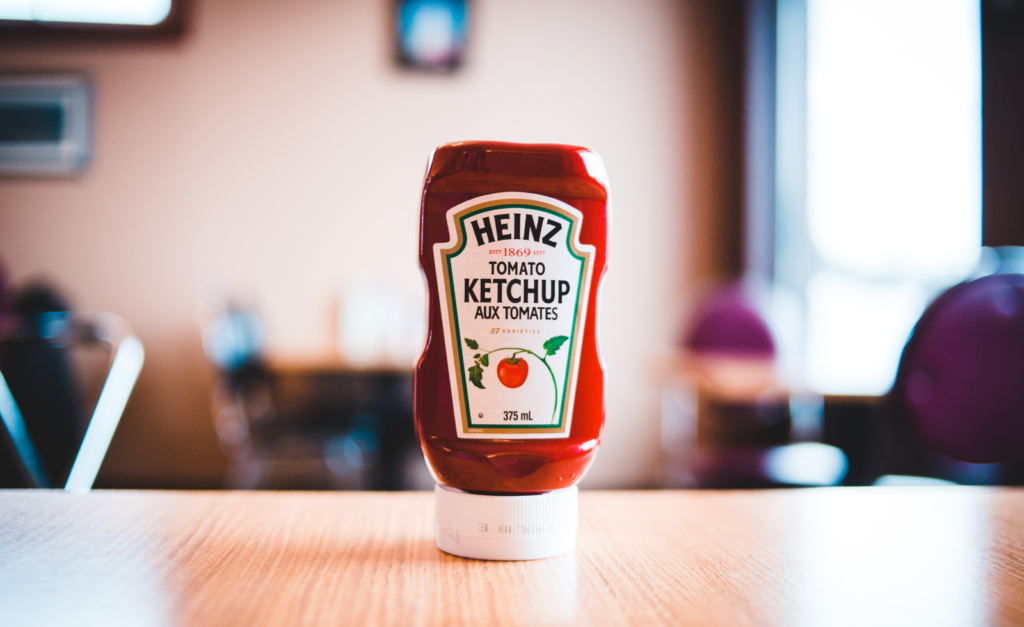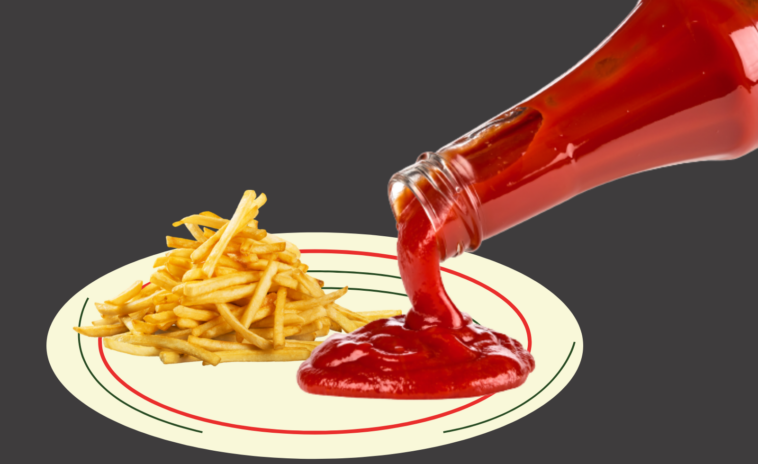There is what some would consider the ultimate combo: ketchup with french fries. Then there is the modern classic: mayo and ketchup in a juicy burger (meat or plant-based!) Then there are the combinations that well — let’s just say they’re an acquired tased. For example, Ketchup with pizza. And some live on the edge and eat pink sauce.
Whatever your taste, most of us use condiments (including ketchup) at some point in our day. However, not all condiments come equal. Many have an unhealthy amount of certain ingredients.

These are the red flags for eating ketchup (and other condiments) below — and how to eat better, instead.
1. Ketchup Has Way Too Much Sugar
The traditional condiments have a lot of sugar in them. This can take its toll on gut health and puts you at risk of chronic disease. Ketchup and barbecue sauce are both extremely high in sugar. Some barbeque sauces contain around 16 grams per serving of sugar.
Obviously, ketchup is a staple in our diet so naturally, giving it up might be a little sad – to say the least. There are homemade alternatives that have less sugar. And for barbeque sauce, too.
2. It Has Fat (And Not The Good Kind)
Things like creamy ranch dressing, honey mustard and mayonnaise have lots of fat. For example, there are around 15 grams of fat per serving in some creamy ranch dressings. Honey mustard has between 10-15 grams per serving. This amount of fat isn’t easily processed by our bodies and our liver can be weighed down.
However, there are kind kinds of fat found in avocados. The body can digest them easier plus, they can be used as fuel. Here is a recipe for a yummy low-fat mayo that’s made from avocados.
3. High Levels of Sodium
The first thing to point out is that many use the terms salt and sodium interchangeably. Sodium is what is found in our food and usually contains preservatives found in processed foods.
Many condiments contain way too much sodium. Soy sauce is the main culprit of this with some containing between 800mg -1005mg of sodium. Diets that contain lots of sodium have been linked to health conditions such as strokes and heart disease.
However, not all is lost — here are low-sodium homemade soy sauce alternatives that you can try.
4. The Serving Size is Misleading
And it’s not always easy to tell. Yes, there are labels but the guidance isn’t always clear. The amount of sugar or salt listed may use teaspoons – but most of us use far more than a teaspoon of ketchup or mayo. This can be super misleading when we’re trying to be on the healthy side.
5. Fat-free… it’s healthier right?
Well, that’s debatable. Condiments labeled ‘fat-free’ usually have less fat as the name would suggest – but what they lack in fat they make up in sugar and salt.
Okay, we’re not saying to completely stop using them — however, knowledge is power. Yes, they’re a useful way to add flavor to food but there are alternatives to store-bought ones that are just as delicious. But the odd indulgence in a burger with all the sauces won’t hurt. We’re only human after all.



